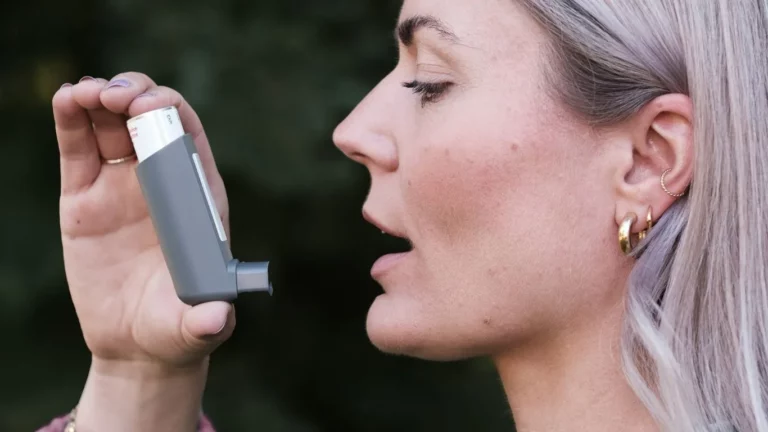Best Practices for Asthma-Safe Outdoor Activities That Let You Breathe Easy
Stepping outside for some fresh air sounds like a great idea—until you remember your asthma. I get it. As someone who has worked closely with asthma patients for years, I know how tricky it can be to balance outdoor fun with respiratory health. But the truth is, you don’t have to miss out on outdoor adventures. With the best practices for asthma-safe outdoor activities, you can enjoy nature without constantly worrying about an asthma attack.
Whether you love hiking, cycling, or simply taking a walk in the park, knowing how to navigate the outdoors with asthma is a game-changer. From understanding triggers to choosing the right time to step outside, let’s dive into some expert-backed strategies that will help you breathe easier while enjoying the great outdoors.
Understanding Your Asthma Triggers

The first step to safe outdoor activities? Knowing exactly what sets off your asthma symptoms. Triggers can vary from person to person, but there are some common culprits that tend to cause trouble.
Pollen and Seasonal Allergies
If you’ve ever stepped outside on a beautiful spring day and instantly felt tightness in your chest, pollen is likely to blame. This tiny airborne menace can be a major asthma trigger.
- Check pollen forecasts: Websites and apps can help you plan your outings when pollen levels are low.
- Wear sunglasses and a hat: These act as barriers to keep pollen from getting into your eyes and hair.
- Shower and change clothes: After being outside, wash off pollen to prevent it from lingering indoors.
Weather Conditions
Ever noticed your asthma gets worse in certain weather? You’re not alone. The environment plays a huge role in how your lungs respond.
- Cold air: Can cause airway constriction. Wearing a scarf over your nose and mouth helps warm the air before it enters your lungs.
- Heat and humidity: Can make the air feel heavy, increasing the effort needed to breathe.
- Windy days: Can stir up allergens like pollen, dust, and mold spores.
Air Pollution and Irritants
Even on the sunniest days, air pollution can be a hidden danger for those with asthma. Smog, smoke, and even strong scents can trigger symptoms.
- Use air quality apps: Before heading out, check the air quality index (AQI) to ensure it’s safe.
- Avoid high-traffic areas: Car exhaust and industrial pollution are major irritants.
- Steer clear of smoke: Campfires, fireworks, and even backyard grills can be problematic.
Choosing the Right Time and Place for Outdoor Activities

Being strategic about when and where you spend time outdoors can make all the difference in managing your asthma symptoms. Timing is everything.
Ideal Times to Go Outside
Picking the right time of day can help you avoid unnecessary flare-ups.
- Morning and evening: These times tend to have cooler temperatures and lower pollution levels.
- After a rain shower: Rain can help clear the air of pollen and pollutants.
- Avoid midday: This is when pollen counts and air pollution are usually at their highest.
Best Locations for Asthma-Friendly Activities
Not all outdoor spaces are created equal when it comes to asthma safety. Here’s where you should (and shouldn’t) go:
- Good options: Beaches, lakesides, and open parks with good airflow.
- Avoid: Dense forests during high pollen seasons, areas near factories, and places with heavy vehicle traffic.
Essential Precautions Before Heading Outdoors

Before stepping outside, a little preparation goes a long way in keeping your asthma under control. Here’s what you need to do:
Always Carry Your Rescue Inhaler
Even if you don’t anticipate an issue, asthma is unpredictable. Having your inhaler within reach can be a literal lifesaver.
- Keep it in an easily accessible pocket or bag.
- Check the expiration date regularly.
- Use it as instructed by your doctor, especially before exercise if recommended.
Dress Smart for the Outdoors
What you wear can impact how your body responds to outdoor conditions.
- Layer up: So you can adjust to changing temperatures.
- Wear breathable fabrics: To prevent overheating.
- Use a scarf or mask: Especially in cold weather or dusty areas.
By understanding your asthma triggers, choosing the right time and place, and taking necessary precautions, you can confidently enjoy the outdoors without fear of an asthma attack. There’s no need to sit out on the fun—just plan smart, stay prepared, and breathe easy!
How to Safely Enjoy Outdoor Activities with Asthma

If you’re like many asthma sufferers, the idea of outdoor exercise might feel daunting. After all, we’ve all heard stories about how cold air, pollen, and pollution can send your symptoms into overdrive. But here’s the good news—there’s a way to safely enjoy the outdoors and make asthma a less significant barrier to your adventures.
Preparing Your Lungs for the Outdoors
The first step to asthma-friendly outdoor activities is preparing your lungs. Just like warming up before a workout, you’ll want to give your airways a little head start before you head out the door.
- Pre-treat with your inhaler: Before engaging in any activity, use your bronchodilator inhaler if recommended by your doctor. It helps open your airways and makes breathing easier.
- Start with gentle exercises: If you’re planning on more intense activity, it’s important to ease into it. Start with a short walk or light stretching to allow your body to adjust.
- Breathing techniques: Practice slow, controlled breathing through your nose, especially in colder weather. This helps warm the air before it hits your lungs.
Choosing the Right Activity for Your Asthma
Not all outdoor activities are created equal when it comes to asthma management. Some exercises can be much easier on your lungs than others, and it’s all about finding what works for you.
Low-Impact Activities
For many asthma sufferers, high-intensity activities might bring on an attack. The key is to start with lower-impact options and gradually work your way up.
- Walking: Walking is one of the easiest and safest ways to enjoy outdoor exercise without triggering asthma symptoms.
- Cycling: A relaxed bike ride on a scenic route allows you to control your pace and breathing.
- Swimming: Surprisingly, swimming is often a great choice for those with asthma. The warm, moist air near the pool can help prevent the dry, cold air from triggering an attack.
High-Intensity Activities
If you’re someone who enjoys higher-intensity activities like running, soccer, or hiking, don’t worry—there’s still a way to make them asthma-friendly. The key is to take extra precautions before, during, and after your workout.
- Warm-up properly: Make sure to warm up for at least 10-15 minutes to prepare your airways for the physical activity ahead.
- Use your inhaler: Pre-treating your lungs with a quick-relief inhaler about 10 minutes before intense exercise can help prevent asthma flare-ups.
- Control your pace: Don’t feel pressured to keep up with others if you’re running or participating in a high-energy sport. It’s important to go at your own pace and avoid pushing yourself too hard.
When to Avoid Outdoor Activities

While outdoor exercise can be incredibly rewarding, there are certain situations when it’s best to stay inside and take it easy. Understanding when to take a break is just as important as knowing when to push yourself.
Weather Conditions That Can Trigger Asthma
Some weather conditions are more likely to trigger asthma than others. Being aware of the risks can help you make better decisions about when to take your workout outdoors and when to stay inside.
- Cold weather: Breathing in cold, dry air can cause airway constriction, especially for those with asthma. If you need to exercise outside in colder weather, try wearing a scarf over your nose and mouth to warm the air before it reaches your lungs.
- Hot and humid weather: Excessive heat and humidity can make breathing more difficult. On days like this, try to avoid outdoor exercise or opt for indoor activities like swimming or yoga.
- High pollen days: If pollen levels are high, it’s best to stay inside, especially if you’re sensitive to allergens. Check local pollen forecasts and plan your outdoor activities around low-pollen days.
- Poor air quality: Smog, pollution, and smoke can irritate your airways, making it harder to breathe. Use air quality apps to check conditions before heading out.
Recognizing Early Warning Signs
If you do venture outdoors and begin to feel any early signs of an asthma attack, it’s crucial to listen to your body and stop immediately. Some of the warning signs that you might need to stop include:
- Shortness of breath or tightness in the chest
- Wheezing or coughing
- Feeling lightheaded or dizzy
- Fatigue or difficulty keeping up with your activity
If you experience any of these symptoms, it’s important to stop the activity and use your rescue inhaler. If symptoms persist, seek medical help immediately.
Building an Asthma-Friendly Outdoor Routine
Once you’ve found the activities and weather conditions that work best for your asthma, the next step is building a consistent routine. Having a set schedule for outdoor exercise will help you stay on track and improve your lung health over time.
- Plan ahead: Check the weather forecast, pollen levels, and air quality before committing to outdoor activities.
- Start slow: Gradually increase your outdoor activity duration and intensity as your body adapts.
- Track your progress: Keep a journal of your asthma symptoms and triggers to better understand what works for you.
With these strategies in mind, you can confidently embrace the outdoors and enjoy all the benefits that come with being active in nature. Whether it’s taking a relaxing walk in the park or conquering a challenging trail, you can find an asthma-safe outdoor activity that works for you!
Case Studies & Real-Life Examples

Let’s talk about real people who have successfully navigated outdoor activities with asthma. These stories are proof that with the right approach, you can enjoy the outdoors without fear of constant flare-ups.
Emily’s Journey: From Avoiding the Outdoors to Hiking Regularly
Emily, a 35-year-old schoolteacher, had always loved nature but avoided outdoor activities after experiencing a severe asthma attack during a family picnic. She believed that fresh air was off-limits for her. That was until she learned how to manage her symptoms properly.
- She started tracking pollen levels and only planned outdoor activities on low-pollen days.
- She worked with her doctor to adjust her asthma action plan, including taking her controller medication more consistently.
- Now, she enjoys regular hikes with her friends—something she never thought would be possible!
Jason’s Soccer Comeback
Jason, a 16-year-old soccer player, almost quit his school team because of his asthma. He struggled with breathing during intense games and felt discouraged. But with some key changes, he made an impressive comeback.
- His coach allowed him to warm up gradually to prevent sudden airway constriction.
- He used his inhaler before practice, as recommended by his doctor.
- He learned to breathe through his nose to warm and filter the air before it hit his lungs.
Now? Jason plays full matches without issues and is even considering college-level soccer!
Key Takeaways: What You Need to Remember
We’ve covered a lot, but here are the most important things to keep in mind:
- Know your triggers: Whether it’s pollen, air pollution, or cold air, identifying what affects your asthma is key.
- Pick the right time and place: Early mornings, after rain, and clean-air areas are your best bets.
- Always carry your rescue inhaler: No matter how good you feel, it’s a must-have.
- Warm up and cool down: Give your lungs time to adjust before and after activity.
- Listen to your body: If you feel tightness or discomfort, take a break.
FAQs
Can I exercise outdoors if I have asthma?
Absolutely! Many people with asthma enjoy outdoor exercise. The key is knowing your triggers, choosing the right conditions, and taking precautions like pre-medicating if necessary.
What is the safest outdoor sport for asthma?
Swimming in an outdoor pool (chlorine permitting), walking, cycling, and yoga are great options. High-intensity sports like soccer or basketball are possible, too, with proper management.
Should I avoid cold weather completely?
Not necessarily. Wearing a scarf over your mouth, breathing through your nose, and using your inhaler beforehand can help.
What should I do if I have an asthma attack while outside?
- Stop what you’re doing immediately and try to stay calm.
- Use your rescue inhaler.
- Move to an area with cleaner air if possible.
- If symptoms don’t improve, seek medical help.
Bonus: Additional Resources or DIY Tips
Want to go even further? Here are some additional resources and easy DIY hacks to make outdoor life with asthma easier:
- Apps to monitor air quality: Download AirNow or Pollen.com to check real-time air conditions.
- DIY homemade scarf masks: Use a lightweight, breathable fabric to make a simple face covering for cold weather.
- Allergy-proof your home: Keep windows closed during high pollen seasons and use an air purifier.
Appendix: Table, References, Disclaimer, and Call to Action
Quick Reference Table: Asthma & Outdoor Activity Guide
| Outdoor Factor | Asthma Risk Level | Best Practices |
|---|---|---|
| Pollen Season | High | Plan activities on low-pollen days, shower after being outdoors |
| Cold Air | Moderate to High | Wear a scarf, breathe through your nose |
| Air Pollution | High | Check air quality apps before going out |
| Humidity | Moderate | Stay hydrated, avoid overexertion |
References
For more expert-backed advice, check out:
Disclaimer
This article is for informational purposes only and should not replace professional medical advice. Always consult your doctor before making any changes to your asthma management plan.
Call to Action
Ready to take control of your asthma and enjoy the great outdoors? Start small, apply these tips, and see what works best for you! Got any personal tips or experiences? Share them in the comments—we’d love to hear from you!

Bianca Nala is a compassionate Nurse Practitioner with a strong background in primary and respiratory care. As a health writer for Healthusias.com, she combines her clinical expertise with a talent for clear, relatable storytelling to help readers better understand their health. Bianca focuses on topics like asthma, COPD, chronic cough, and overall lung health, aiming to simplify complex medical topics without losing accuracy. Whether she’s treating patients or writing articles, Bianca is driven by a single goal: making quality healthcare knowledge accessible to everyone.






